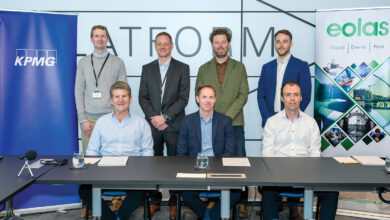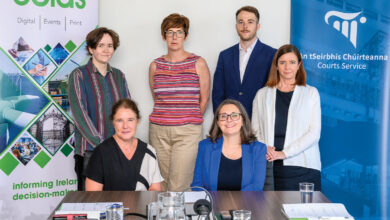Meeting the challenges of delivering Project Ireland 2040
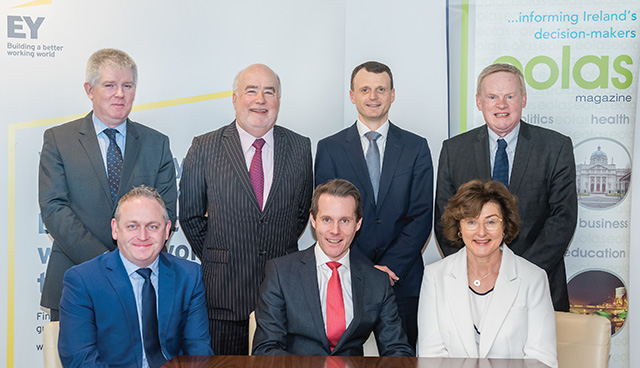

EY hosted a round table discussion of key stakeholders on the opportunities and challenges around Project Ireland 2040, which incorporates the National Development Plan (NDP) and the National Planning Framework (NPF).
How are each of your organisations preparing for a significant increase in spend and are there sufficient skills and resources available to prepare projects for market within the required timeframes?
Jim Curran
Project 2040 outlines the next 10 years of capital expenditure. A lot of what we are to spend in the next five years is already committed to. We are already planning for it and much of it is in train in terms of the major projects including the Children’s Hospital, the move of the National Maternity Hospital to St Vincent’s, the National Forensic Mental Health Hospital, which is currently under construction, and the roll out of primary care and community nursing.
We have got that in place and we’re resourced to do it, giving us time for the step change in terms of the volume of spend. The challenge we’ll have in the next 12 to 18 months is to prepare for what we will be spending for delivery in the period from 2022 to 2027.
Michael Horgan
Higher education is different in that I don’t think we’re preparing for a significant increase in spend because there doesn’t seem to be an awful lot of funds made available to higher education in the new plan. If you recall previous reports, such as the Cassells Report, the underfunding of education has been a huge issue over the last few years.
I suppose from the point of view of what we are getting, we do have a backlog of huge capital spend that is required, just to catch up.
Mike Quinn
A lot of focus at the minute is on the water infrastructure, but gas is just as big a challenge even though it’s not in the public eye. It was interesting to see in the announcement last week, that the largest package of money went towards decarbonisation. Gas is obviously a fossil fuel and it’s very much seen as a transition fuel at the moment, but we have a different view of that. We believe that there’s a long-term place in Ireland’s energy supply for gas and increasingly from renewable sources.
On the water side, having just joined the company I totally underestimated the scale of the challenges. The entire network, not just in Dublin, but nationwide is in a state of disrepair. We have got a massive problem on our hands and need a significant amount of additional investment post-2027 to prepare for the growth that is coming.
Shane MacSweeney
With regards to skill shortages, particularly in the construction sector, we’re probably only half way to where we need to be. It is a major issue that is not resolved simply by the provision of additional education and training places. There are a lot more macro issues to consider for Ireland to attract people back into the industry, especially from overseas, including the availability of housing, cost of living, schools, and hospitals together with the longevity of the need for that particular skillset.
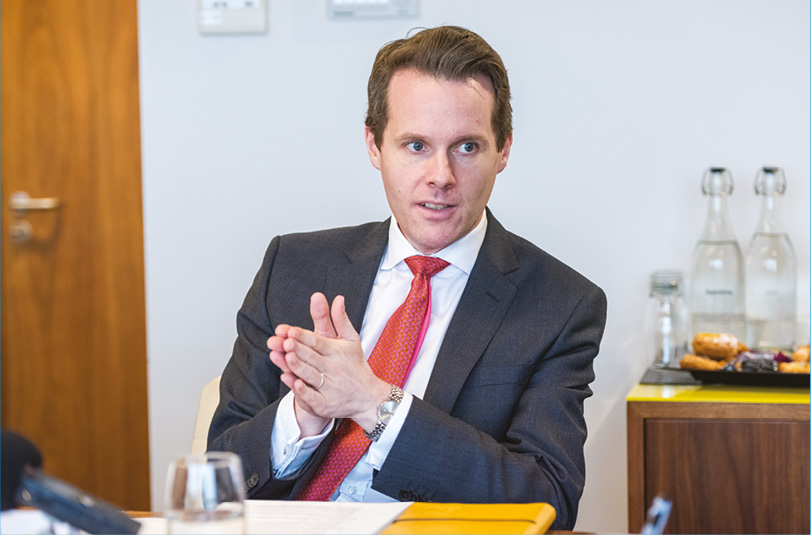
Helen Hughes
Transport Infrastructure Ireland (TII) is involved in the delivery of national road projects and light rail projects. In the national development plan, €6.6 billion is allocated to national roads over the 10-year period, €3 billion for the Metro Link and further amount for the planning of light rail projects in Dublin. Are we prepared for the significant increase in spend? Yes, and we’ve been here before back in the noughties, and the corporate knowledge is still retained within TII and we are a stronger organisation since the merger of NRA and RPA in 2015.
Mark McGreevy
We’re doing an awful lot of work to prepare. We are investing heavily in our overhead at the minute. That involves everything from investing to keep our infrastructure team in place, to resourcing new business units, particularly in our housing business unit. In addition to that, there is a lot of investment going into training and development to help address the skills shortage. We can’t fix it ourselves, but we’re trying to do whatever we can internally to attract school leavers to apprenticeship type schemes.
What role does the private sector have to play in delivering Project Ireland 2040?
Shane MacSweeney
Our Government needs to be nimble and agile because we don’t know how the private sector might be able to help in 10 or 20 years’ time. Nor do we know what technologies are going to be available. In terms of flexible policy making, the pace of technological change is rapid and thus the Government needs to develop policy in parallel. With such a pace of technological change, the private sector can play a major role in developing new ideas and solutions as opposed to pure capital outlay.
Mike Quinn
For me, looking at the water side, we’re highly dependent on the private sector to build out our capital delivery programme. One of the concerns we have, to be frank, are the construction subcontracting companies. The collapse of Carillion sent a shockwave through the entire industry. We need strong subcontractors that can deliver.
There are very tight margins for contractors, which obviously gets value for money for the consumer, but they must have cash flow. We’re doing our bit, ensuring that we pay our subcontractors on time to ensure that the major projects are protected.
Jim Curran
We need assistance in terms of making the business case. What’s coming through very strongly in some of the commentary on Project Ireland 2040 is that we must be effective with our building cost analysis, and have the business cases correct, to ensure that we are investing and building the right thing. We do rely on the private sector in developing these and testing us in terms of asking the awkward questions. For any big investment to be successful, it must be also disruptive because we cannot continue in health to do what we always did; simply putting in shinier infrastructure. We must change the way of working.
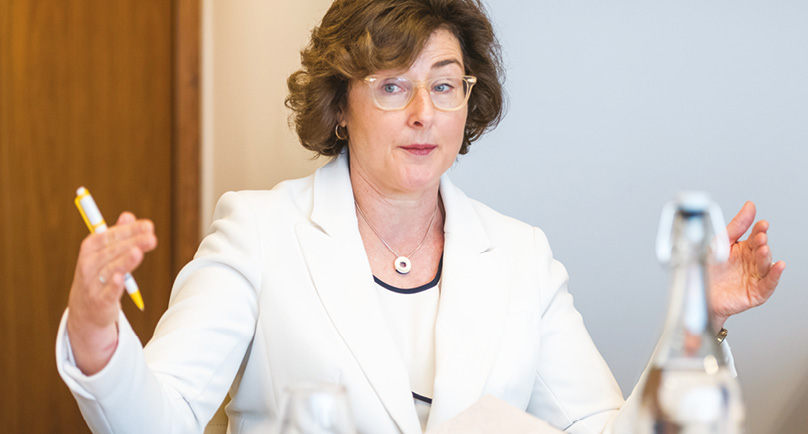
Helen Hughes
The private sector is key, from consultants to contractors. We must build up capacity and expand because housing, water, hospital and road infrastructure requirements are competing for the same pool of contractors, which could lead to building cost inflation.
In the noughties, when we were rolling out the national road programme, we did get a lot of interest from European contractors which added to the overall capacity. We’ve just finished Luas Cross City where there were Portuguese, Spanish, French companies and Irish contractors working in partnership so we can expand capacity. Ireland is successful in that regard.
Michael Horgan
It is worrying to hear that we have skills shortages and shortages of engineers when there are so many people going to college. That is something that will have to be managed, possibly through incentives. It would be a shame if all the new development was backlogged because of a lack of skills, when we have the greatest ever number of students in our history in third-level education.
If you look at education, the institutes of technology have ambitions to take on the academic side of apprenticeships. The universities, however, have been very slow to this end, they seem to think this beneath them to a certain extent. I think this is a big mistake on their part.
Mark McGreevy
One of the things that we have seen for the first time in this plan is a recognition of the need for the private sector to get more involved. The construction industry had a strong record in delivering major infrastructure projects in the early noughties and there are many good examples to take from that experience as we go forward.
Previously, private enterprise got involved early to design and develop the most efficient solution and ensuring value for money. This contrasts with what we currently do, which is to procure projects simply based on price. We have got to move away from this procurement approach if we are going to be successful.
The problem is that the industry is living off little or no margins and carrying too much risk. They will be better able to carry some of that risk and mitigate it if they are involved much earlier.
Do you envisage Brexit impacting on Ireland’s delivery of the National Planning Framework and National Development Plan?
Helen Hughes
In order to have sustained funding for the NDP it is important that our economy is performing well. The National Planning Framework anticipates an extra 660,000 jobs and an extra 1.1 million people living in Ireland. Brexit could have an impact on that. The potential loss of tax revenue from not delivering that level of jobs could be a big risk to ensuring government funding for the NDP.
Shane MacSweeney
The Irish economy needs infrastructure investment regardless of Brexit. We need to detach both issues. We are now feeling the impact from years of underinvestment in our infrastructure; in water, housing and transport.
When looking at government expenditure, infrastructure and capital expenditure is often the easiest thing to cut, particularly if there were to be a sudden economic shock from Brexit. For example, Metro North was a casualty of the 2008-2009 financial crisis.
The NDP needs a detailed delivery strategy and plan, with clear governance. There needs to be prioritisation and joined-up thinking to take Project Ireland 2040 from the vision to reality, with projects prioritised, based on robust economic rationale, over the next 10 years. That approach would certainly help mitigate the impact of Brexit.
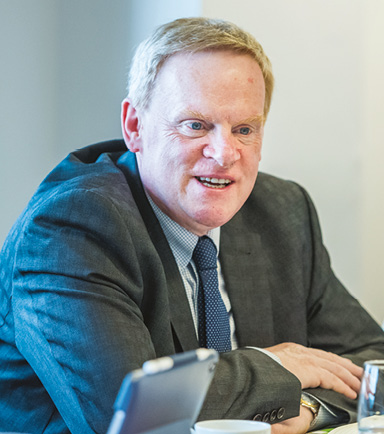
Jim Curran
I’m optimistic. I don’t think Brexit will happen. It will be Brino [Brexit in name only]. Any impact of Brexit depends on the state of our economy. In terms of our projects, we are not over-reliant on the UK for supplying into our market to do the work. There has already been a drop in the number of people going to the UK for construction jobs and that might help us in terms of resourcing. That might also be the case for funding and inward investment, particularly in some sectors such financial services. The drop the sterling will also help prices in Ireland. Other sectors such as agriculture and tourism are much more reliant on the UK market and that might, in turn, impact the wider economy.
Mark McGreevy
Brexit will impact us, but to differing extents depending on outcome; a hard or soft Brexit. It is already impacting business today as entities are already deciding to leave the UK and some of them are not coming to Ireland because we don’t have the infrastructure in place.
This development plan needs to be seen as ‘business-as-usual’ in order to maintain what we currently have, never mind attract future inward investment. In terms of physically delivering the plan, we have done some research that has shown that very little product comes from the UK into Ireland for infrastructure delivery and instead imports needed mostly come from mainland Europe. For the material that does come from the UK we will see some importation delays and price inflation due to potential tariffs on UK products. There will equally be opportunities in terms of FDI, who will continue to see Ireland as the avenue into Europe. The bigger concern is foreign fiscal policy; shifts in other EU states and the US.
What role will technology play in delivering Ireland’s 2040 ambition?
Michael Horgan
A report by Dell forecast that 85 per cent of jobs that will exist in 2030 haven’t been invented yet – even if it is 50 per cent that is frightening. If we look back at the last 20 to 25 years, we have gone from landline to mobile phones and from fax machines to the internet. This plan has the same time period but the technology is accelerating a lot faster. No matter what business you are in – health care, education or construction – data is the future. Many in the education sector think that it is going to be the same as it was 400 years ago; the ‘sage on the stage’ delivering lectures. I have two grandchildren and it will be completely different when they go to college than it is now. Technology will change everything in education. We will have personalised delivery of learning.
Shane MacSweeney
I have four children aged eleven, eight, six and three. My three-year-old will probably never drive a car and the six-year-old might not either. That is a phenomenal change in how our society functions. How can we develop policy to keep the pace of technological change? Looking at Mike’s business, what technologies will there be in 10-years’ time that will allow you to predict the next leak? All businesses will be built around data.
Jim Curran
Are we doing the right thing in preparing for 2040 by modelling things on 2018? – or is it based on what we were doing in 2010 or even in 2000? Advances in medical technology will mean that we will be delivering healthcare differently in 2040. Once a machine was good for 20 years. Now we have to look at buying equipment or going for a service-based model that ensures we have the latest technology. Why are we investing so much in buildings that will radically change? Some of our hospital buildings are from the eighteenth century. Future buildings will have to be much more flexible with several refits and there may even come a time when we no longer need the building – so why are we building so much longevity into them?
In terms of the technology for delivering the investment, it is up to the construction industry to become much smarter. I saw one report on how 25 industries have adopted new digital technologies and construction came 24th, just behind hunting. Why are we still doing things the same way for decades? That will be a challenge for the client group as well as for the construction industry. Even some of our design consultants and architects have been slow to embrace new technology.
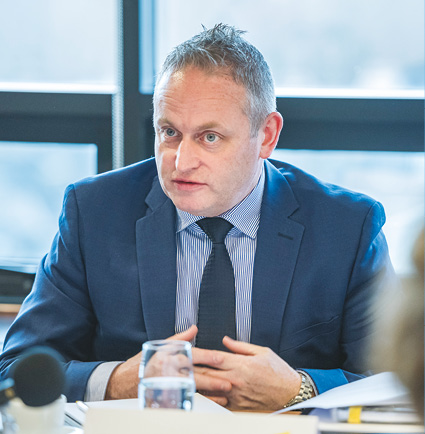
Mike Quinn
Two things will happen in our world, the first being the end of the centralised office. People will work at home or elsewhere and will not commute into Dublin. Work will become much more agile. We have done an initial agile working assessment and we have a working group addressing how we best work with our staff so that we can have a better plan around commuting. We did a survey and found a very significant proportion of our workforce are in the car for over two hours every day. I can see a time when you will not pass by an office in Carlow or Kilkenny to come into Dublin. You may only come in for a team meeting on a Monday morning and technology will allow you to work elsewhere the rest of the week.
The second change, is perhaps the most disruptive; data analytics. This includes modelling networks to predict where leaks are going to happen. The UK water utilities are well ahead of us in terms of using data analytics. They have partnered with universities to model their networks. I recently visited United Utilities and saw this modelling, done by Leeds University, for myself and what it is doing for their programme of work. They are in predictive mode whereas we wait for the householder to call us and then we go and fix the leak. We need to move to that predictive mode.
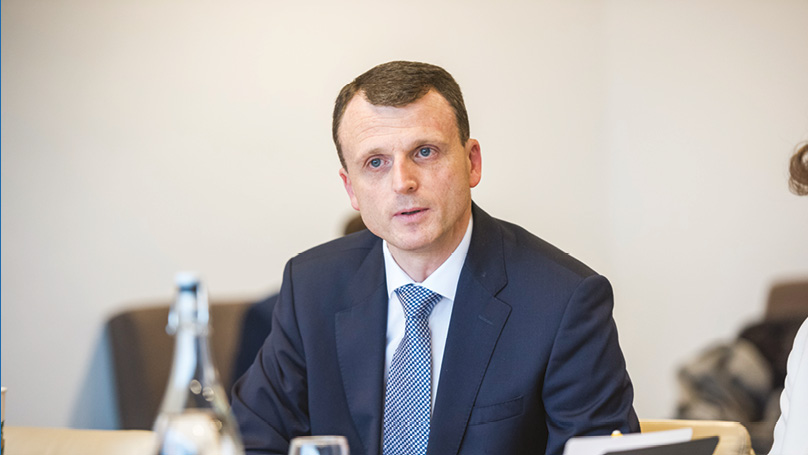
Mark McGreevy
The construction industry is slowly waking up to the fact that it needs to embrace new technology. History has shown it is perhaps one of the worst industries for embracing technology. But it is the one industry that is surviving on one to one-and-a-half per cent profit margins. An industry with such slim margins doesn’t have the capacity to invest. We have got to change that and it’s not just a problem here, it is the same in other countries. We need to change the procurement routes and start mandating new technology implementation. We need to make it part of the bid process and put it up to private industry to show how they can use technology in a productive way to lower costs.
Helen Hughes
We are always trying to keep abreast of the implications of technology. There is now a lot of debate about automation, which could deliver safer and more reliable infrastructure but it might also generate more traffic. It is not clear if it will increase or decrease demand.
It is difficult to determine what to deliver in terms of infrastructure. For example, if we are going to build a new road between Limerick and Cork and want it ready for automated vehicles there are a lot of uncertainties. Do we build a new parallel communications network and should it be 4G or 5G? What connections and masts do we need along that road? We need to be flexible and adaptable and consider if we need to buy more land for communications masts. By the time we build the road and cars are automated, will we need that land? If not, we may well be criticised for having bought it.
Although it is difficult to decide what to invest in for 10 years’ time, we do need to future-proof our roads.
TII is a member of CEDR, a network of European of national road administrations. We collaborate on research projects and share knowledge. It is invaluable for our work and for future-proofing our plans.
Shane MacSweeney
Coping with the speed of technological change comes down to agility and being open to what is being developed elsewhere. Having a global network is key, as we’re all grappling with the same issues. No one can point to exactly what technology will exist in 2040, but it is about being agile, with governments keeping pace with technological advances and being nimble with relevant policy changes. As part of a global network we often link clients up with their counterparts elsewhere.
What lessons can we learn from elsewhere?
Shane MacSweeney
I have moved back to Ireland after spending seven years in Australia where I was involved in infrastructure development, including several large transport projects. The Australian Government developed a similar capital plan several years ago. One noticeable difference was that in Australia, a separate independent body, Infrastructure Australia, was established to oversee the delivery of the country’s Infrastructure Priority List. There is also a similar body in the UK, the Infrastructure and Projects Authority, that co-ordinates all infrastructure investment. These two organisations have been key to the delivery of their respective visions. Without sufficient focus around delivery a vision will simply remain a vision.
Mark McGreevy
We are active in the UK and there are a number of good things happening there to replicate here, particularly in how they procure and deliver projects. We made a successful bid for the £200 million Great Ormond Street hospital project and in doing so had to submit a robust quality submission and only one figure and to confirm that their budget was feasible. There were incentives in place to improve the budget. We were also involved in bidding the HS2 project. Again, we were asked to submit just three key figures and the rest of the submission was quality orientated that consisted of hard data that we were tested on. In contrast, in Ireland we have a public works form of contract that pushes all the risk onto the contractor and the lowest price wins out. It hasn’t worked and we will have to move away from that if we are to deliver this plan.
Did you let the Great Ormond Street people have access to your cost system? Was it an open book approach?
Mark McGreevy
Yes, it was open book. This approach has also been taken by TII on several occasions and it worked extremely well. For some reason that hasn’t been extended to other sectors.
Shane MacSweeney
Most of my time in Australia was spent delivering projects exactly like that. Where there is a more collaborative form of procurement, government will save much more money in the long run.
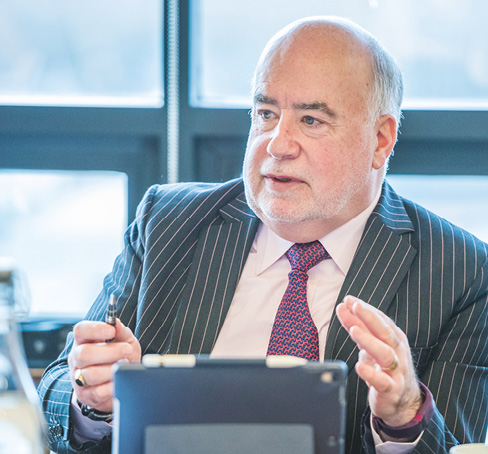
Michael Horgan
We need to build on that pocket of experience and expertise in TII and extend that approach to other sectors in Ireland.
Mike Quinn
This is a widely recognised problem. I was in the UK recently and we met with a large contractor who will not bid on any Irish contract as there is no risk-sharing with the contactor.
Mark McGreevy
Cost certainty can be delivered much better under these more collaborative routes. We were involved in the biggest section of the Crossrail Tunnel project and that was all cost reimbursed with a target price and a gain-share mechanism. That whole scheme had an original budget of £16 billion and it came in £500 million under. That approach was very effective.
Helen Hughes
A collaborative approach could attract people to the construction industry as it is less adversarial. It might attract more women as well.
Profiles




